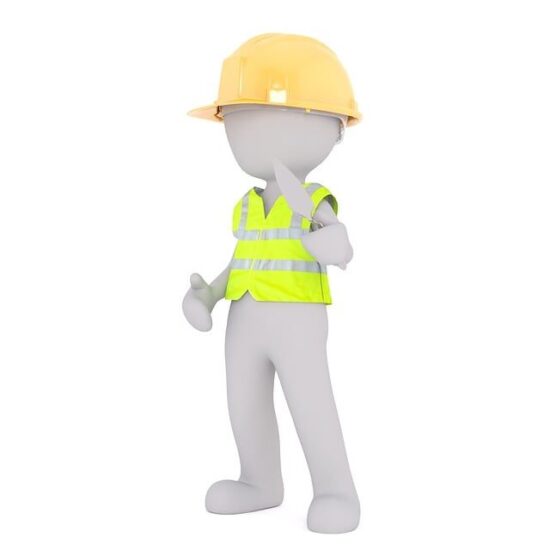Private mortgage insurance (PMI) is a type of insurance that protects lenders from losses if a borrower defaults on their mortgage loan. PMI is typically required for borrowers who make a down payment of less than 20% of the purchase price of a home. The cost of PMI can vary depending on the borrower’s credit score, loan-to-value (LTV) ratio, and other factors, but it typically ranges from 0.55% to 2.25% of the original loan amount per year.
For example, if a borrower takes out a $300,000 mortgage loan with a 10% down payment, they would have an LTV ratio of 90%. If their credit score is good, they might be able to get PMI for around $1,000 per year. However, if their credit score is poor, they could pay as much as $3,000 per year for PMI. This is not a one-time expense, but a fee they’ll pay as long as the equity they have in their home is below 20%.
Although interest rates have been coming down recently, they are not by any means as low as they used to be just months ago. For those borrowers who have to pay for PMI, it’s just another hefty cost that has to be added to the monthly payment, contributing to the widespread lack of housing affordability that is playing a significant role in slowing down the residential real estate market, as home buyers struggle.
However, many borrowers are often not even completely aware of the impact of such a cost, even if they can afford it. PMI is a requirement that often pops up late in the process, when buyers/borrowers are completely invested in the purchase of a property, and so is the home seller, that sadly, not enough thought is put into it.
There are a few useful tips to avoid or reduce the burden of a PMI payment and here are some:
1) The first tip here is to not overlook such a fee that only benefits the borrower in the sense that it allows them to get approved and complete the transaction with the purchase of a home. All other benefits tend to rest with the lenders, who protect themselves from a default, but PMI does not replace the payment for the defaulting borrower. If the lender needs to sell the foreclosed home at auction to recover the amount owed, it will recoup, on average, about 80% of the home value, according to foreclosure statistics. The remaining 20% will be covered through the PMI insurance policy.
PMI can add thousands of dollars to the cost of a home over the life of a loan. For example, a borrower who pays $1,000 per year for PMI on a 30-year mortgage will pay a total of $30,000 in PMI premiums. This is why it is important for homebuyers to shop around for lenders and compare PMI rates.
2) The second tip is to consider all options to avoid PMI, and there could be a way for some borrowers to avoid it altogether, or at least reduce it significantly in amount, time, and payment method. There are a few ways to avoid paying PMI. One way is to put 20% down on a home. This will bring your LTV ratio down to 80%, which is typically the minimum LTV ratio required for lenders to waive PMI. However, it’s easier said than done.
3) So another way (third tip) to avoid PMI is to find a lender or loans that do not require PMI for borrowers with good credit scores and low LTV ratios. VA, FHA, and USDA loans don’t usually require PMI, despite the low or no down payment.
4) A particularly exciting development is the rise of “workforce housing” programs (fourth tip). These initiatives specifically target specific professions, like teachers, firefighters, and first responders, who are vital to the community but often struggle to afford a home close to where they work. Through tailored financial assistance and incentives, these programs help bridge the gap between their income and the ever-escalating housing costs.
For those eager to explore their options, a fantastic resource exists: the U.S. Department of Housing and Urban Development’s (HUD) local homebuying page. This one-stop portal offers a wealth of information on programs available in every state, empowering individuals to discover the specific paths to homeownership in their own communities.
5) The fifth tip is another strategy to avoid the extra cost of PMI for some may be getting an 80/10/10 loan where the borrower puts 10% down and takes out a 10% home equity line of credit (HELOC) and uses it to satisfy the 20% down payment requirement. However, a HELOC would probably be at a variable interest rate, so it could be wise to pay it off sooner rather than later.
6) For the sixth tip, keep in mind that some lenders offer loans that allow borrowers to avoid paying PMI in exchange for a higher interest rate to make up for the increased risk of lending to a borrower who can only afford a down payment that is below the 20% standard. Borrowers will need to undergo a qualification process, but they’ll be allowed to put down less than 20%, if approved. However, their monthly mortgage payment will be higher—in some cases, substantially so—because they’ll be charged a much higher interest rate (but it may be tax deductible). It’s an arrangement that can potentially strain a borrower’s budget. Over the life of the loan, this can amount to a significant sum, possibly even higher than with private mortgage insurance, and the PMI should come off once the borrower has made enough payments to reach a 20% equity in the property. Which triggers the The borrower with PMI
7) Seventh tip is an alternative solution, Deals on Terms aka Creative Financing, although it is not very well known and therefore underutilized, most likely because it is very disruptive to mainstream, bank-dominated home purchase financing methods. For these, it may be necessary to seek out investors or other operators that specialize in and are versed in this type of deals, with experience being an important criterion, another being the ability to design a better deal than a conventional transaction. There are no standard ways to make these arrangements, which, far from being detrimental, means that they can be set up in the best possible way, within real estate law, for sellers and buyers alike, rather than the mainstream one-size-fits-all type of deals. Conventional deals are standardized and a simplified process, but they can be expensive and money, often a lot, is left on the table in a variety of very subtle ways.
There are basically two types that allow home buyers to avoid a hefty PMI payment with Deals On Terms and have many other benefits: lease-options and seller-financed purchases:
A) A lease-option, with all the many variations, not just in language, but in deal terms, essentially allows to acquire control of a property, move in and use it, while retaining control over it with an option to purchase at predetermined terms, to be exercized within an agreed amount of time. Then the optionee/buyer can apply for a home mortgage loan, potentially having saved up or paid down the purchase price and therefore avoiding PMI, without having to wait to buy and move in. It would also secure that property in a known market, while the future of the real estate market is always difficult to predict.
B) A seller-financed purchase can effectively replace or delay traditional financing, depending on the length of the term. Payments are usually made monthly and pay off or knock down the amount owed, so the property can be paid this way in full or refinanced with the equity built in that can reach the 20% that avoids PMI. There is typically a down payment, but it’s usually less than 20%. All cases are specific, and everything is negotiable. The qualifying process is also easier, albeit usually harder than a lease option, which normally has a lower entry fee.
8) Eighth, obviously, waiting to save enough or improve one’s position to qualify without PMI could be a wise decision, but not everybody can deal well with delayed gratification, and sometimes life just puts people under pressure, like rentals that expire or greatly increase in price and a lack of alternative housing, so everything has to be considered.
9) For sure, PMI shouldn’t be used as a tool to acquire a larger or more expensive home, thus stretching the borrower’s budget. A healthy margin should always be factored in, as the duration of the loan is often a few decades and much can happen during that long time period.
If you are considering buying a home, it is important to understand the cost of PMI and how to avoid paying it. By shopping around for lenders and comparing PMI rates, you can save yourself thousands of dollars on the cost of your home.
In addition to the tips mentioned above, here are a few other things to keep in mind about PMI:
- PMI is usually canceled automatically once your LTV ratio reaches 80%. However, you can also request to have PMI canceled early if you can prove that you have enough equity in your home.
- There are different types of PMI. The most common type is called traditional PMI, which is paid monthly by the borrower. However, there are also other types of PMI, such as single-premium PMI and lender-paid PMI.
- PMI is not tax-deductible.





Pingback: Borrowers still not aware of the impact of PMI – Proxima Bulletin: News & Info